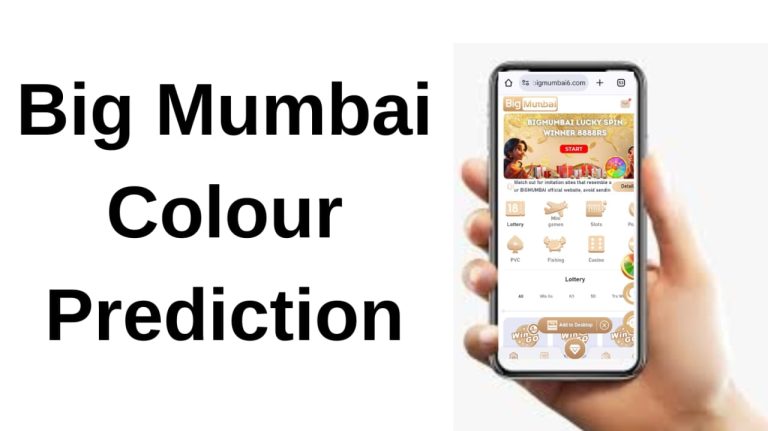Big Mumbai: The City of Dreams and Limitless Possibilities
Mumbai, India’s financial capital, is more than just a city—it’s a living, breathing organism of culture, ambition, and resilience. Often called Big Mumbai by those who experience its immense energy, it is a place where dreams are born, nurtured, and sometimes even broken, only to rise again with renewed strength. From the towering skyline of Nariman Point to the bustling markets of Dadar, Big Mumbai represents the essence of India’s urban spirit.
A Brief History of Big Mumbai
The city we now know as Big Mumbai was originally a group of seven islands inhabited by fishing communities. Over the centuries, it passed through Portuguese and British hands, gradually merging into a single landmass through ambitious land reclamation projects. By the time India gained independence, Mumbai was already on its way to becoming the beating heart of the nation’s economy.
The Economic Powerhouse
When you hear “Big Mumbai,” it’s not just a reference to the city’s vast size, but also to its massive economic impact. Mumbai generates over 6% of India’s GDP and is home to the Bombay Stock Exchange, Reserve Bank of India, and headquarters of countless multinational corporations. The city’s port is one of the busiest in the country, handling millions of tonnes of cargo annually.
Corporate districts like Bandra-Kurla Complex and Nariman Point reflect the city’s business acumen, while thriving startup hubs in Powai and Lower Parel showcase its innovation-driven side. In Big Mumbai, opportunity doesn’t knock—it’s everywhere, and it moves fast.
Cultural Diversity
Big Mumbai is often described as a melting pot of cultures, and for good reason. People from all corners of India—and even the world—come here to live, work, and chase their dreams. This blend results in a fascinating mix of languages, festivals, cuisines, and traditions.
From Ganesh Chaturthi celebrations that bring the city to a standstill to the quiet observance of Eid in Byculla, the city’s cultural calendar is vibrant and inclusive. Street food like vada pav, pav bhaji, and bhel puri coexist with fine dining experiences from Michelin-starred chefs. Every neighborhood in Big Mumbai has its own cultural fingerprint.
Bollywood: The Glamour Capital
The Hindi film industry, better known as Bollywood, has its home in Big Mumbai. Film City in Goregaon, the studios of Andheri, and the iconic Mehboob Studios have produced countless blockbusters. Aspiring actors, directors, and writers flock to the city in search of their big break. The film industry is not just entertainment—it’s a multi-billion-dollar business that influences fashion, music, and even politics.
Landmarks That Define Big Mumbai
If you’re visiting Big Mumbai, certain places are non-negotiable for your itinerary:
- Gateway of India – An iconic arch monument facing the Arabian Sea.
- Marine Drive – The Queen’s Necklace, a picturesque boulevard best enjoyed at sunset.
- Chhatrapati Shivaji Maharaj Terminus (CSMT) – A UNESCO World Heritage Site and a working railway station.
- Haji Ali Dargah – A serene mosque on an islet in the Arabian Sea.
- Elephanta Caves – Ancient rock-cut temples that speak of the region’s history.
- Colaba Causeway – A paradise for street shopping and food lovers.
Each landmark tells a different story, but together they narrate the saga of Big Mumbai.
The Lifeline: Local Trains
Ask any Mumbaikar, and they’ll tell you that local trains are the veins and arteries of Big Mumbai game These trains carry millions daily across three main lines—Western, Central, and Harbour. They’re fast, crowded, and sometimes overwhelming for newcomers, but for residents, they’re an irreplaceable part of life.
Challenges of a Megacity
While Big Mumbai offers countless opportunities, it’s not without its challenges. Overpopulation, traffic congestion, high cost of living, and periodic flooding during monsoons are ongoing issues. Yet, the city’s resilience shines through every crisis. The 2008 terrorist attacks, floods, and even the COVID-19 pandemic couldn’t dampen the spirit of Big Mumbai.
Future of Big Mumbai
The city’s skyline is constantly evolving with mega infrastructure projects like the Mumbai Trans Harbour Link, Coastal Road, and Metro network expansion. These developments promise to ease traffic, connect distant suburbs, and solidify Big Mumbai’s position as a world-class metropolis.
FAQs about Big Mumbai
Why is Mumbai called Big Mumbai?
The term “Big Mumbai” is an informal way of describing the city’s vast size, economic strength, and cultural influence. It’s symbolic of the city’s massive opportunities and global importance.
What is Big Mumbai famous for?
Big Mumbai is famous for Bollywood, financial markets, iconic landmarks, street food, and its diverse cultural fabric.
Is Big Mumbai expensive to live in?
Yes, Big Mumbai is one of the most expensive cities in India, especially in terms of housing. However, the city also offers a wide range of lifestyle options to fit different budgets.
What is the best time to visit Big Mumbai?
November to February offers pleasant weather, making it the best time to explore the city comfortably.
How do people commute in Big Mumbai?
Local trains, BEST buses, auto-rickshaws, and taxis are the most common modes of transport. The Mumbai Metro is also expanding rapidly.
Does Big Mumbai have good nightlife?
Absolutely. From rooftop lounges to late-night street food joints, Big Mumbai never really sleeps.
Conclusion
Big Mumbai is not just a city—it’s a way of life. It demands hard work but rewards ambition. It can be overwhelming, but it’s equally inspiring. Every lane, every skyline silhouette, and every train compartment carries countless stories of struggle, success, and survival. Whether you come here to build a career, experience its cultural vibrancy, or simply see the Arabian Sea from Marine Drive, Big Mumbai will leave an imprint on your heart.

